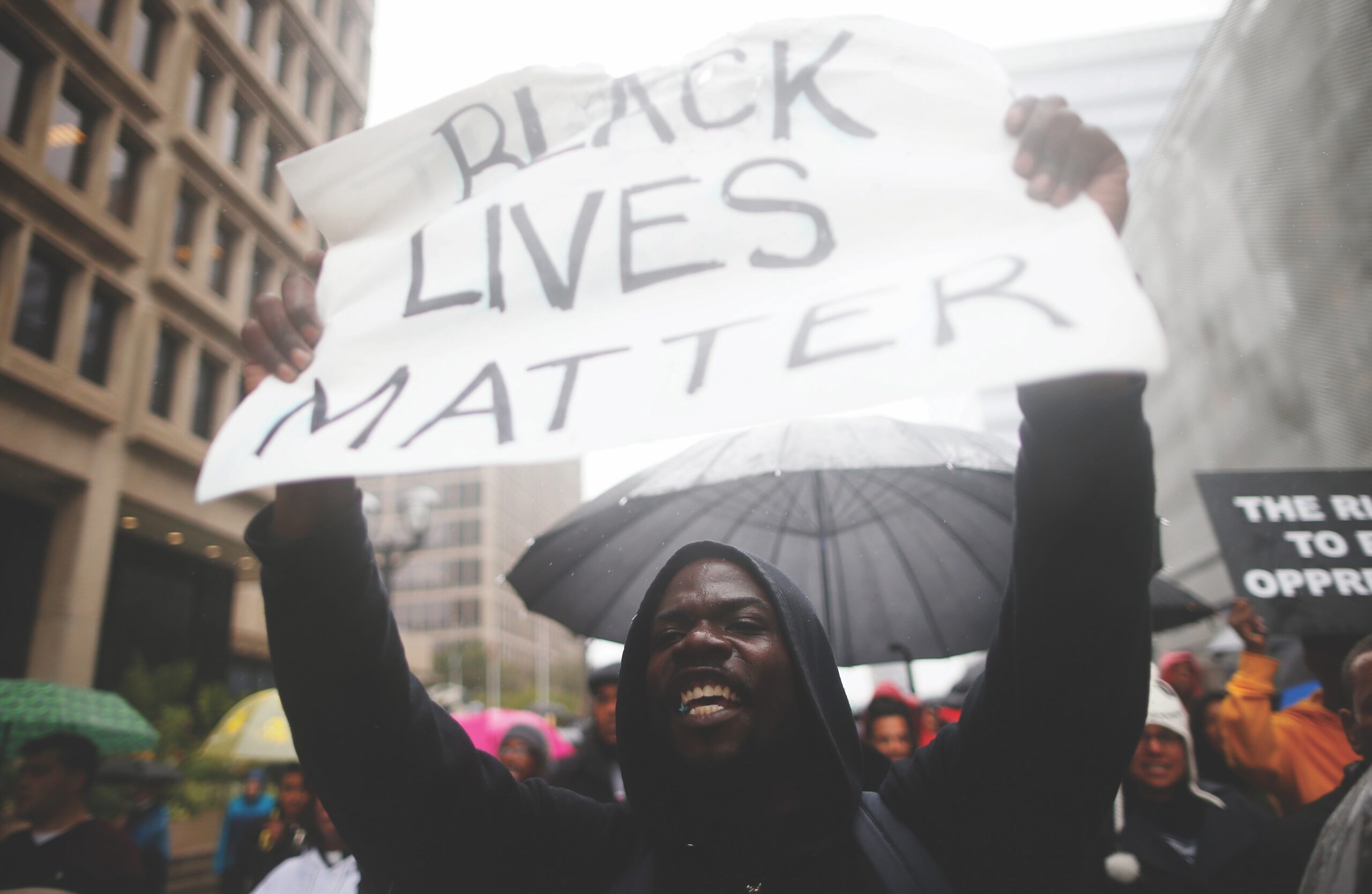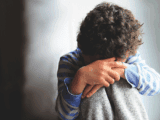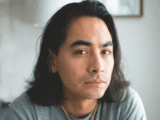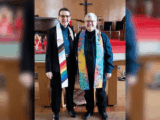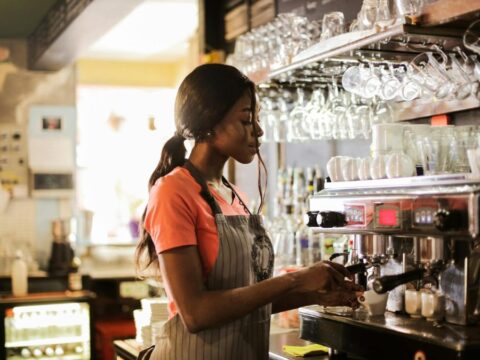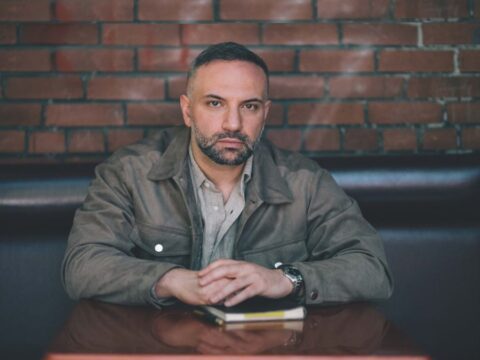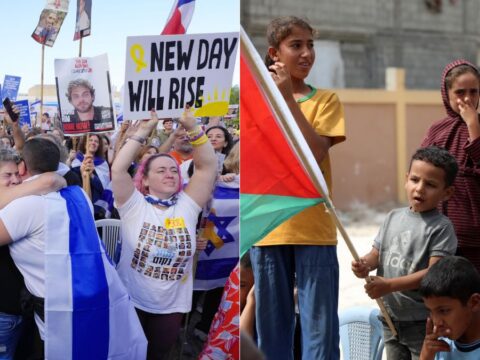In its simplest form, this is a story about two men. One was 18 years old and Black. His name was Michael Brown Jr. The other man is white, a 28-year-old police officer in the St. Louis suburb of Ferguson, Mo. His name is Darren Wilson.
On a hot August afternoon last summer, the lives of the two men intersected. In the space of a few hours, their brief and deadly interaction escalated into a story of global proportions, shaped by themes of power, poverty and race. Brown’s shooting death spawned a movement, best known by its Twitter handle, #BlackLivesMatter. One Black life awakened the conscience of a city, then a nation, then the world.
You may unsubscribe from any of our newsletters at any time.
The story begins on Saturday, Aug. 9, 2014. Brown was walking down the middle of Canfield Drive in Ferguson, a predominantly middle-class community in the northwestern suburbs of St. Louis. Wilson was on patrol in his cruiser, a white SUV. Wilson blocked Brown’s path and called him over to the vehicle. There was a conflict, a physical struggle. Wilson fired two shots, and Brown ran away. Brown was up to 50 metres away from the SUV when he turned around. He was facing Wilson when he was fatally shot. Brown fell forward on the yellow median strip of Canfield Drive, and shortly afterward he was pronounced dead.
It happened quickly: just 90 seconds elapsed between the time Wilson stopped his cruiser and called for backup over the police radio and the time he fired the last of 12 shots. It is important to note that the testimonies of eyewitnesses are inconsistent, and elements of Wilson’s own narrative have changed between the time of his first reported conversations with investigators and his formal testimony a month later.
The uncertainty about key facts has inflamed arguments and endless speculation about what did and did not happen, who is innocent and who is to blame. Opinions about these matters are sharply divided along racial lines, just as Black and white neighbourhoods are sharply divided in St. Louis. But the Black community will tell you that what happened — or more precisely, what didn’t happen — afterward is just as disturbing as Brown’s death. This, at least, is not in question.
“You had this kid lying out in the street for four-and-a-half hours,” says Norman White, 61, a local college professor and criminologist. White was not in Ferguson on that August afternoon, but he didn’t have to be there to see Brown’s body. Just after Brown was fatally shot, bystanders began taking photos and videos of the scene. They texted and tweeted the images to friends and uploaded them to social media sites.
The news spread fast, and the images went viral. Anyone with a smartphone, tablet or computer could see the grainy video of a white police officer standing over the body of a Black man, the anguished faces of the victim’s parents, and the anger of the crowd that gathered behind the yellow police tape. Residents kept watch until officials took Brown’s body away in a dark SUV. “Loading him in there like he was a dog,” one witness said.
White still finds the images from that day haunting — symbols of persistent inequality and institutional racism in America. “We all saw the lack of dignity with which people treated his death. The anger, the fuel for the protests, is based on the African-American experience in this country. People are not just protesting the death of Michael Brown. They’re protesting the lack of dignity that they’ve been treated with for so long.
“I was born in 1953,” he continues, “so I’ve lived through the civil rights movement and I’ve seen what we’re capable of accomplishing as a community. But I’ve also seen the eroding of many of those gains. We have 50 years of social science research on poor Black and poor brown communities, but they are pretty much worse off today than they were during the civil rights movement.”
Romona Taylor Williams, executive director of the Metro St. Louis Coalition for Inclusion and Equity, becomes audibly angry when she speaks about Aug. 9 — or “8/9” as many activists here are now referring to it, calling to mind another tragic day. “The way that Michael Brown was assassinated . . . what that said to the Black community was, ‘You don’t matter. You don’t matter in life, and you don’t matter in death.’ It incensed us because it brought back the memories of when we were hung on trees by the Ku Klux Klan and left there.”
The images galvanized the Ferguson community, a city of 21,000 residents, two-thirds of whom are Black. A small group of bystanders and residents marched to the Ferguson police station later that day to demand answers. What was the police officer’s name? Why did he stop Brown on the street? Why did he shoot him? At first, no one except Wilson’s colleagues knew the identity of the police officer who shot Brown. No one knew that Brown had allegedly stolen a box of cigarillos shortly before encountering Wilson. They presumed Brown had been stopped, as many Black men are stopped every day, by a police officer who had targeted him because of the colour of his skin.
The next day, Sunday, Aug. 10, hundreds of residents from the wider St. Louis area joined Ferguson residents to protest the fatal shooting. That evening a riot erupted. Jonathan Pulphus, 19, was there. He says only a handful of people were responsible for the looting and the arson. He could see them clearly from his position near the front of the protest group, and he is unsure if the arsonists and looters were protesters, residents or outside instigators. “At most, there were 10 of them. Maybe fewer. But the cops did not go over there. They stood in a line in front of the protesters and they pepper-sprayed us, even though we weren’t doing anything wrong.”
The images from that night are as haunting as the images of the previous day — helmeted riot police holding shields, batons, guns and “less lethal launchers,” as the riot weapons are called, loaded with rubber bullets. Police dogs stood menacingly at their side.
Many who saw these images stared in disbelief. Is this really taking place here, in the middle of the United States of America? What is going on? I thought we were better than this.
***
The events in Ferguson set off alarm bells across the United States, as did subsequent events in other cities, especially the failure to indict the white police officer involved in the July choking death of Eric Garner in New York City. The protests increased in frequency and intensity, like a fever that spikes every night as the body attempts to fight off an infection.
“This really is about race,” says Norman White. “It’s about how this country has policed poor Black communities for far too long. . . . The fact that young people can be stopped walking from their house to school or to a neighbour’s house is offensive. It’s made Black residents feel like they are ‘less’ than other citizens, because they don’t have the same rights. If you are in a community where every time a police car pulls up, even young kids automatically turn around and put their hands up against the wall because that’s the response that’s been drilled into them, you’ve gone beyond reasonableness. It is happening all the time, and Michael Brown was the final straw.”
Bigotry and bias — whether overt and conscious or covert and unconscious — matter in a place like Ferguson, where 67 percent of the residents but only three of its 50 police officers are Black. White’s observation that police target Black residents is supported by Ferguson’s internal reports. In 2013, Black drivers accounted for nearly 93 percent of arrests, while white drivers accounted for seven percent. This is hard to explain, given that contraband was discovered on more than one-third of the white drivers and on only one-fifth of the Black ones. Overall, Black Americans are incarcerated at a rate six times higher than the rate for white Americans, according to the U.S. Bureau of Justice.
If the shooting of Michael Brown confirmed that law enforcement is biased against Black Americans, the announcement last November that a grand jury wouldn’t press charges against Darren Wilson reinforced the widely held view that the justice system is racist too. In a long, confusing and inflammatory speech, St. Louis County prosecuting attorney Robert McCulloch blamed “insatiable” news reporters, rumour-mongers and social media for complicating the investigation. One listener retorted, “Social media isn’t the problem. Shooting children is the problem.”
A fresh wave of protests and riots broke out across the city.
***
In the weeks and months following the shooting of Michael Brown, hundreds of new organizations sprang up. They tend to see Ferguson as a flashpoint for wider political, social and economic issues. It is too early to say if these movements will lead to lasting change, but their leaders welcome the opportunity to focus attention on problems that have festered since the first civil rights movement in the 1960s. The 50th anniversary of the pivotal march on Selma, Ala., this month only sharpens the focus.
Taylor Williams is a veteran of the civil rights movement and an advocate for poor Blacks, most recently in North St. Louis. When she moved here in 2006, she was appalled by the region’s “Mason-Dixon line” separating Blacks, who live on the north side of the city, from whites, who live on the south. “I’ve always lived in urban centres, but I’d never seen anything like that in my life,” she says. “I knew right away that something was seriously wrong in St. Louis.”
For Taylor Williams, the real enemy is systemic and institutional racism, not personal prejudice. “Our society was founded in racism, beginning with the exploitation of the Native American community and continuing with slavery. The local uprising has become a larger movement because this is a pervasive issue that permeates every society in the world. I like to put it this way: I don’t have to worry about bigots in my social circles, but I do have to worry when they bring their bigotry into civic organizations and institutional workplaces.”
In fairness, the political mainstream has not stood by idly as events have unfolded. Last November, Missouri Governor Jay Nixon created the Ferguson Commission and swore in its 16 members. The racially diverse group includes clergy, activists, youth, educators, police officers, businesspeople, politicians and lawyers. Their mandate is to study the underlying issues raised by the Ferguson tragedy and its aftermath, and to deliver a report with specific policy recommendations by September.
Rev. Traci Blackmon, one of the commission’s most visible members, is pastor at Christ the King United Church of Christ in Florissant, Mo., and a link with younger activists in the #BlackLivesMatter movement. She has marched with them and given formal presentations about Ferguson from coast to coast. Whenever she can, she brings youth leaders on her speaking engagements because, as she is quick to point out, they are the true leaders and catalysts of the growing international movement.
“Every time I’m out there with the youth,” she says, “the words of Coretta Scott King come to mind. She said, ‘Struggle is a never-ending process. Freedom is never really won, you earn it and win it in every generation.’ A new generation of youth is leading this movement, not because anyone passed the baton, but because they are commanding authority by their actions.”
While the killing of Michael Brown brought people into the streets, it’s not what keeps them there, Blackmon continues. “The youth and leaders keep coming because of the dehumanization of people. They will not tolerate the oppression of any person of any race, gender or sexual orientation.”
Alisha Sonnier, 19, a first-year student at St. Louis University, is one of the young leaders Blackmon describes. She’s president of Tribe X, an organization she founded after 8/9. “Although it would be nice to pinpoint one thing, one area we are focusing on, like police accountability or economic justice,” she says, “to name one would exclude others. We attend the Black coalition meetings, which encompass many of the organizations that have come out of the movement, and we have begun talking about the next phase. We are focused on introducing substantive new actions . . . but you have to keep in mind that if you just got shot on Aug. 9, you are still recovering from that wound.”
Sonnier dismisses criticisms that the movement lacks a strong, unifying leader. “I think it’s inaccurate to say that the movement is leaderless. I like to say that it’s leaderfull. Maybe having just one person like Dr. Martin Luther King was good for the 1960s, but what we have is good for us now.” Organizers are accountable to each other, she adds. “Let’s never forget that there is power in numbers. When we move, we move with others and we all move together.”
It is a hopeful image that calls to mind photographs and videos of protesters young and old, black and white, chanting in unison and marching in step on the streets of cities around the world. No one can know what the end will be, but everyone agrees that something historic began with Michael Brown.
“Michael Brown may not have been a perfect kid,” says Norman White, “but I believe his legacy will be one that his parents will be proud of. His name, his legacy is that he will be remembered as the one who started a civil rights revival.”
***
This story first appeared in The United Church Observer’s March 2015 issue with the title “Beyond Ferguson.”

